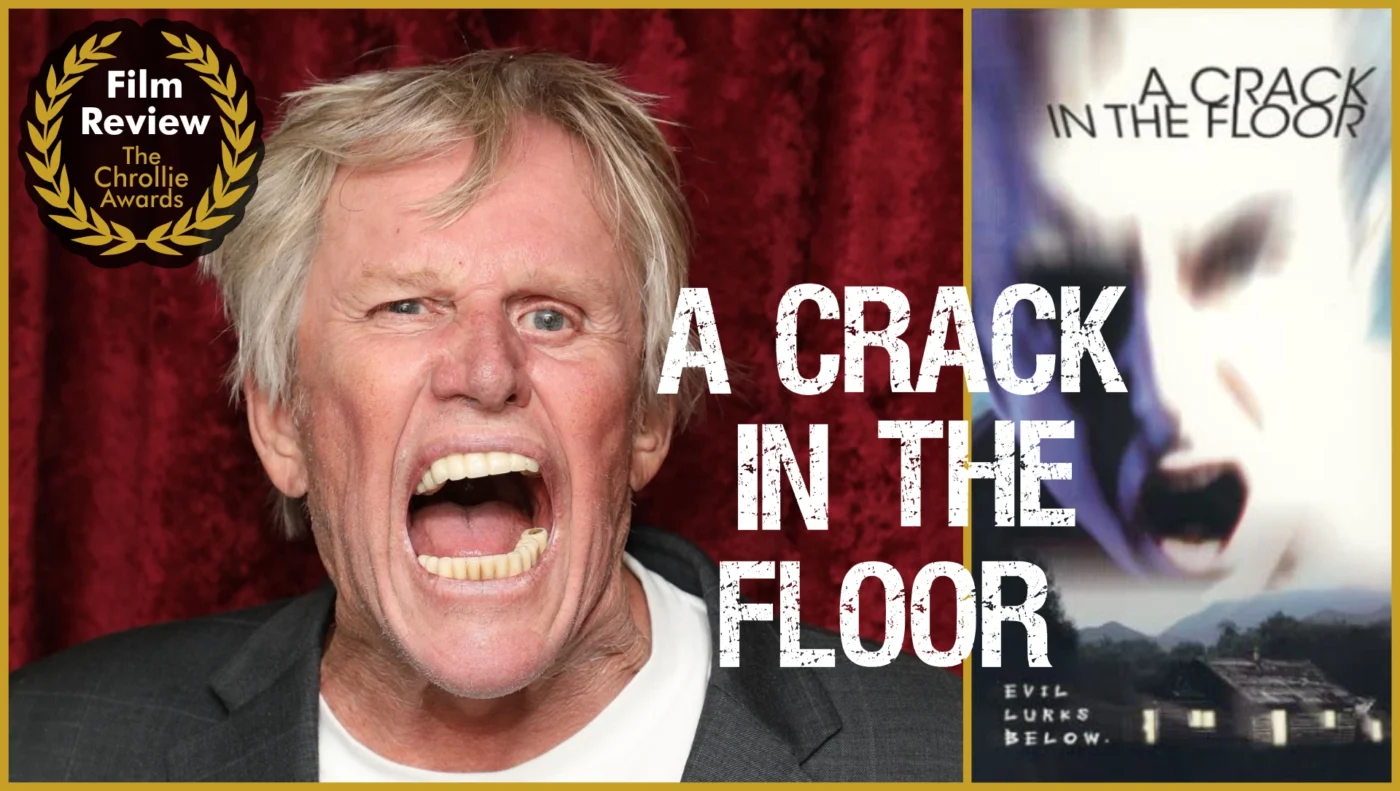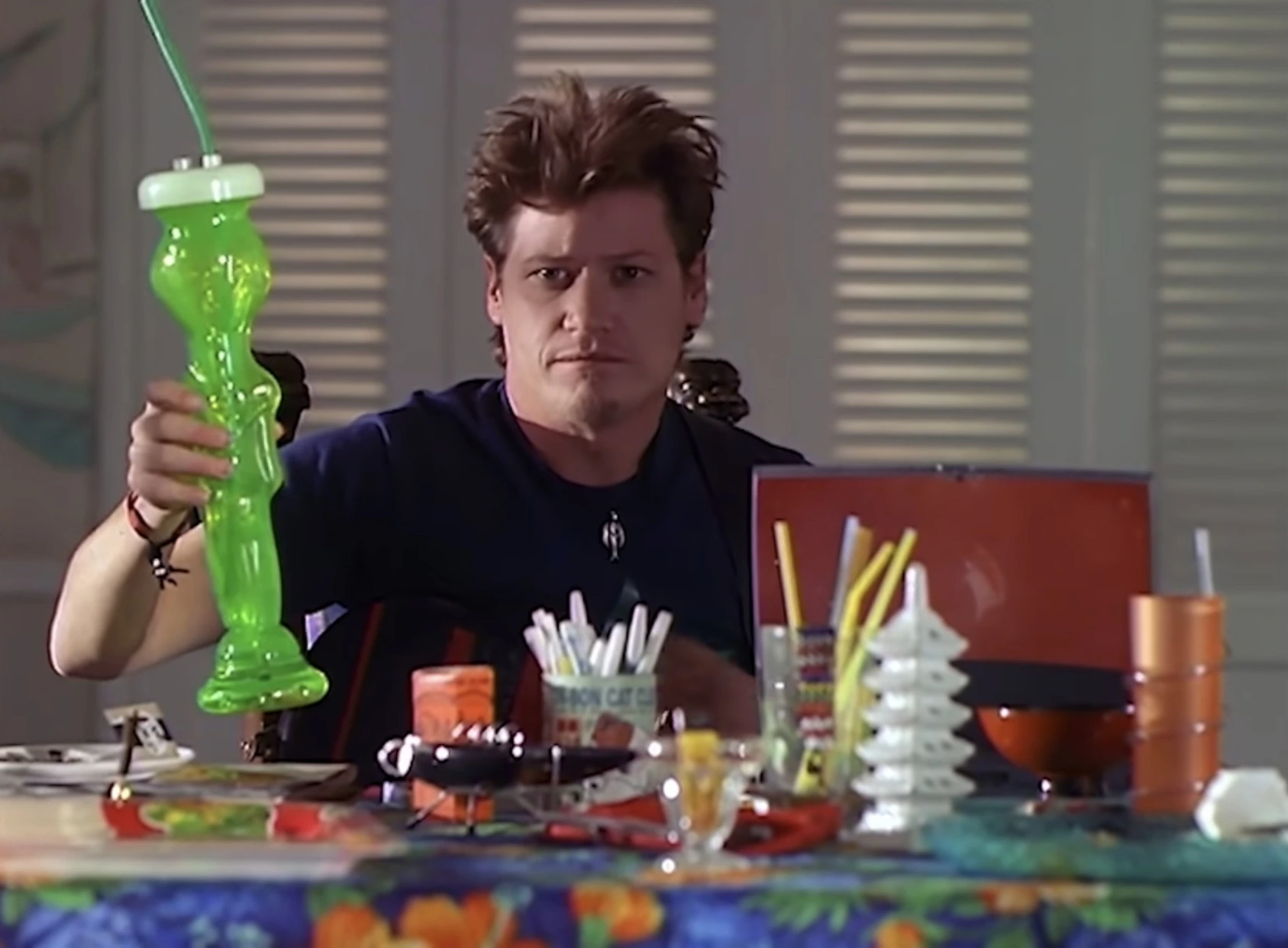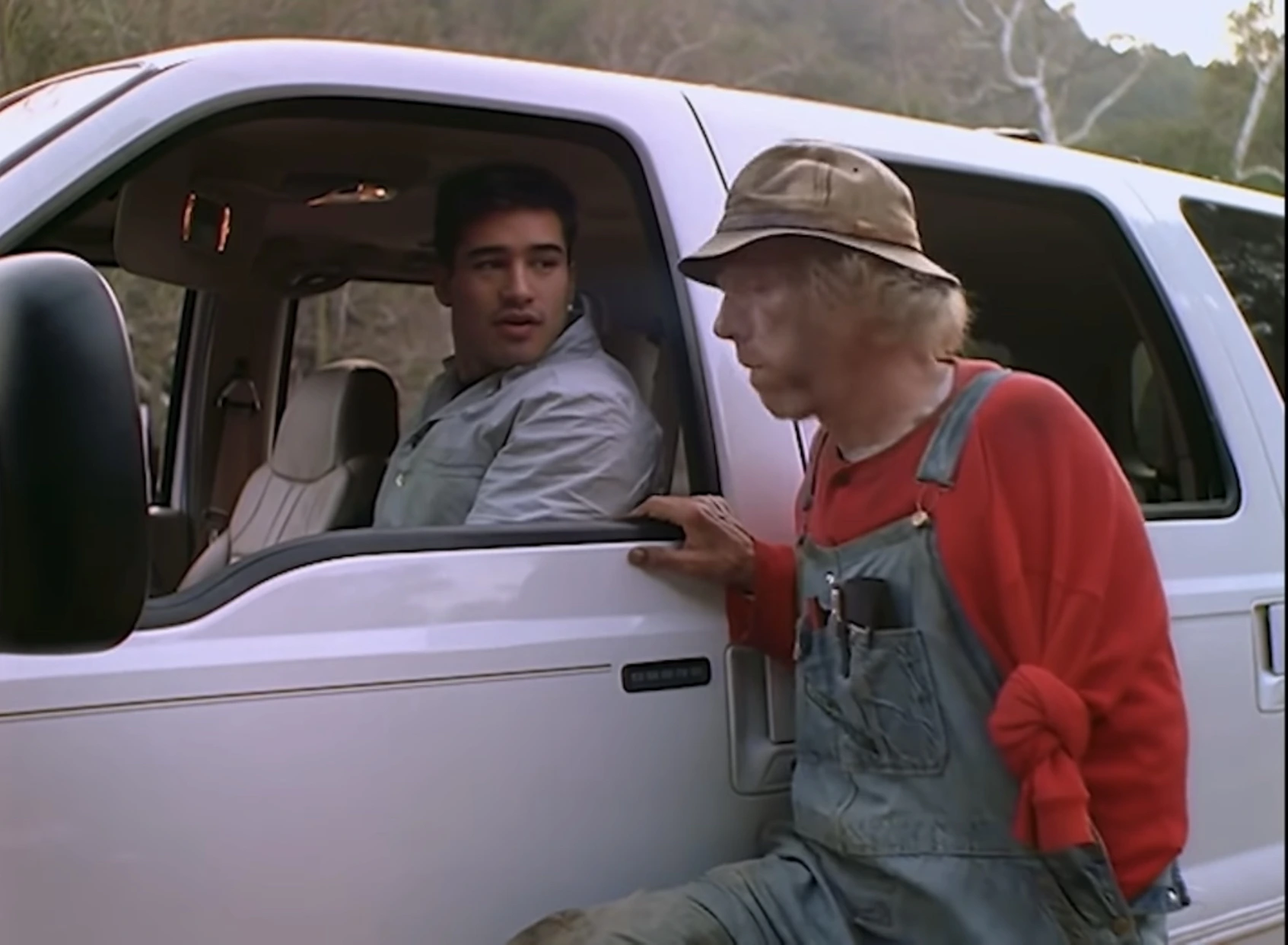What do alcoholics and Necrophiliacs have in common? They both like to Crack open a cold one on the floor

 By Benjamin Chrollin |July, 2022
By Benjamin Chrollin |July, 2022
With tears in my eyes, I can’t remember for the life of me a cinematic experience as meaningful to the arts as Schindler’s List (1994) or Citizen Kane (1941). I am floored. A Crack in the Floor (2001) is to American film and arts what the Mustang and Corvette is to American cars.
The film is based around a young boy (he/him) and his mother (she/her) living in the rustic country side where she is accosted by two dissolute people (they/them) who then proceed to violently rape her and then turn their white aggression upon the young child, beating him nearly to death. That is until anywhere from 80 to 20 years pass, a quick dissolve edit reveals the young man is alive and thriving under the family’s now-abandoned floorboards.
We’re then introduced to an original cast of stoners, jocks and academics who then decide to vacation out in the wilderness, away from the ills of today’s society.
Johnny (played by Bentley Mitchum, best known for playing Tony in Real Men Don’t Eat Gummi Bears) and Kate played by Justine Priestley (of Let’s Stain the Couch fame). I particularly enjoyed these two characters as they appeared to have the most depth and development. We, the audience, would never have known they were the “stoners” if it weren’t for the bongs, disheveled hair and tie-dye clothing.

We are then introduced to the rest of the cast as they begin their road trip. Amongst them is Academy Award winner, Mario Lopez (of Saved by the Bell fame) who co-stars as the archetypal overly-masculine character, Lehman (he/him). Though I found it refreshing to have a POC in the role, I did not find this believable in the least, honestly. It’s just not believable to me for a POC of Central-American ancestry having such a “white” name as “Lehman.” I found myself removed from the universe – thus my suspended disbelief came crashing down every time it was uttered.
I can only surmise this was a dog whistle for white supremacist groups as the name sounds suspiciously similar to “lame man” by the writers and directors, Sean Stanek and Corbin Timbrook (they/them). I’d argue they broke new cinematic ground with this piece but I can’t help but feel it’s lacking in today’s era as yet another whitewashing of ethnic characters, which is a common tactic employed by today’s film industry.
Either way, after some character-delving, they/them find themselves crossing paths with other locals – with one of them being none other than Gary Busey him/themself! I was shocked, not because of Busey’s appearance but because the film bravely broke the fourth wall by having them play themself. On the first watch, I thought it would work to the film’s detriment but after the seventh viewing, I feel it brings the film a nice layer of charm and world-building to the experience. To the risk-takers go the spoils!
Speaking of risks, the film bravely takes many artistic stabs in very creative ways. One of which is the lighting in the film. Throughout the film, there appears to be a light emanating from the floorboards as if a bottled sun is in the laps of the cast. Now, many non-artistically minded plebeians would say that the production just rented a truck, didn’t think to check the interior, realized the tinted windows were too dark on their camera, and shoved a lightbulb (or flashlight) back there – but I’d argue that’s shortsighted and incorrect.


The deep, bright, luminous effect is to highlight the innocence of the characters. As they rotate seats in the vehicle, that is their (I mean this as both literal and metaphorical) moment to shine! It is to draw the audience’s attention to them and expand on their fictitious high-points in life and their lowest of lows. Also, the camera needed to be able to pick them up with out being silhouettes during exposition scenes. They also made great use of the abundance of blue lights on set. The dark woods of Northern California are just too tonally ambivalent, so they (thankfully) used blue gels/filters so the audience would recognize that nighttime is scary time for films.
Another intriguing stylistic choice was the film’s pacing itself. Truly daring.
In a head-jerking and whiplash-inducing manner, the film ramps up to new conflicts only to stop abruptly and continue with exposition from the gang of youngsters. Most hack critics in Hollywood would label this as “bad writing,” “bad direction,” or “bad editing” but I’d argue they don’t truly understand art and there has been a word to describe such artisanship: avant-garde.
The film cleverly drags the audience along for the first two-and-a-half acts before ramping up to the umpteenth degree in the last 10 minutes as a flurry of death is splashed across the screen. I felt this was effective in eliciting a response from the audience as they would inevitably slump over in boredom for 80 out of the 90 minutes of runtime, only for everything to go very sideways for the unsuspecting gaggle later on in such a short amount of time.
Which leads me to the film’s pièce de résistance; *CAUTION: SPOILERS AHEAD*
All characters die! There are no heroes, there are no victims, only colliding lives of characters who all end tragically, that is of course, not counting the young boy at the beginning. The film’s box art and promotional material lead we/us, the audience, to believe Gary Busey was the killer but it was actually the young child from the beginning! I was in such utter shock and awe at the revelation that I didn’t even notice the warm urine running down my leg.
Stanek and Timbrook also strategically wove other character-building elements into this deathly flurry as Lopez lies outside, enjoying the stars with his onscreen crush, Heidi, played by Daisy McCrackin (they/her ; best known for her breakout role of “Clerk” from Atlas Shrugged: Part 1) until he suavely leans in, kisses her forehead and gently states, “I gotta take a sloppy shit.”
As Lehman reenacts the “clever girl” kill from Jurassic Park via explosive diarrhea in the bushes, Heidi finds her head snapped and broken by a shadowy figure. Lopez returns, shaking his legs as warm gravy leaks down his pants while he leans in for a kiss from Heidi. She lies unresponsive.
He curiously rubs his hands atop her, feeling for her breasts (she verbally gave consent beforehand) and then to her crotch only to discover that her head was rotated backwards – thus the “breasts” he was feeling were actually shoulder blades. Also, that was no vagina, but her anus and/or prostate! I particularly found this to be an incredibly genius decision because his character Slater (Saved by the Bell) was known to skip classes, therefore he clearly had to miss biology class at some point (if not simply determined by rule of averages alone.) Stellar filmmaking.

After Lopez flees in terror from Heidi’s body, a cis-white male police officer (realistically) apprehends him without question and ignores his pleas of innocence before taking him to the scene of the multiple crimes for which he’s being racially profiled for. They’re almost immediately killed and the film ends with the killer playing under the floor boards of his old home.
This film filled an empty void, not just in my soul, but the void within American Cinematic Arts as a whole. The very fact this film was made to pioneer the later-2000s film industry just shows how impactful this work really was. It not only restored my faith in art, but also in humanity, if not life itself. After experiencing such an impressive piece of artistic history, this film raised my spirits to such a high degree that the only way I could lose hope in anything at this point is if something outlandish and unexpected happened on the world stage, like if the fascist Supreme Court repeals Roe v. Wade.
A Crack In The Floor (2001) Review Score

